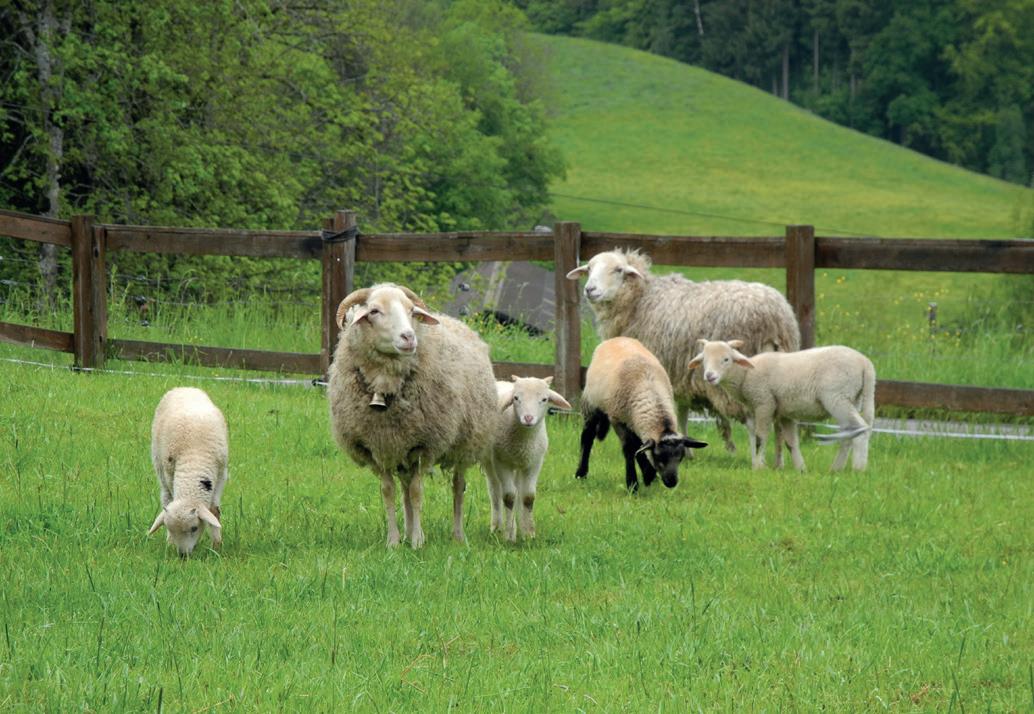
1 minute read
Bünder Oberländer sheep
Bündner Oberländer sheep
Bündner Oberländer rams at pasture (Ernst Oertle / Verein zur Erhaltung des Bündner Oberländer Schafes)
Origin and development
The Bündner Oberländer derives from the Tavetscher (Val Nalps), Medelser (Val Medels), Somvitger (Val Somvitg) and Vriner (Lumnezia) sheep. The Tavetscher, believed to be a descendant of the neolithic turbary sheep, became extinct in 1954 as a result of inbreeding. From 1984, to conserve the genetic heritage of the three remaining types, herdbook breeding was established on the basis of 40 pristine animals from the Medels. Together with the "Association for the Conservation of the Bündner Oberländer sheep", the breeders involved are trying to give today's Bündner Oberländer sheep a future. It is to be hoped that these efforts will be supported by additional breeders.
Description
The colour may be white, brown, grey, black or chamois. This fine-limbed breed is lightly fleshed and has a mixed fleece. It has a fine-featured face and a wool-free head. The rams mostly have imposing spiral horns, while the ewes may be horned or hornless. Females weigh between 40 and 60 kg, while males can weigh up to 85 kg

Two Bündner Oberländer ewes with their young (Ernst Oertle / Verein zur Erhaltung des Bündner Oberländer Schafes)
Breeding objectives
h Hardiness, longevity, adapted to mountainous terrain, healthy, no genetic defects h Light and fine build, with a noble head h Good fertility and rearing traits h Medium to coarse wool h Lean, tender and fine-fibred meat
References
Verein zur Erhaltung des Bündner Oberländer Schafes (www.bo-schaf.ch) ProSpecieRara (www.prospecierara.ch)










